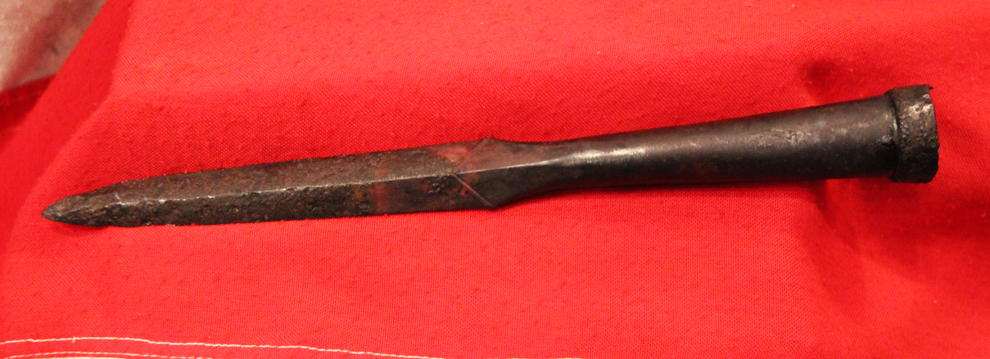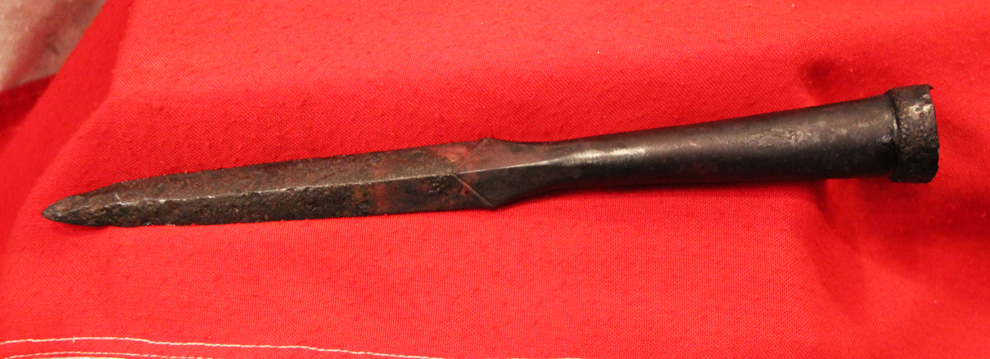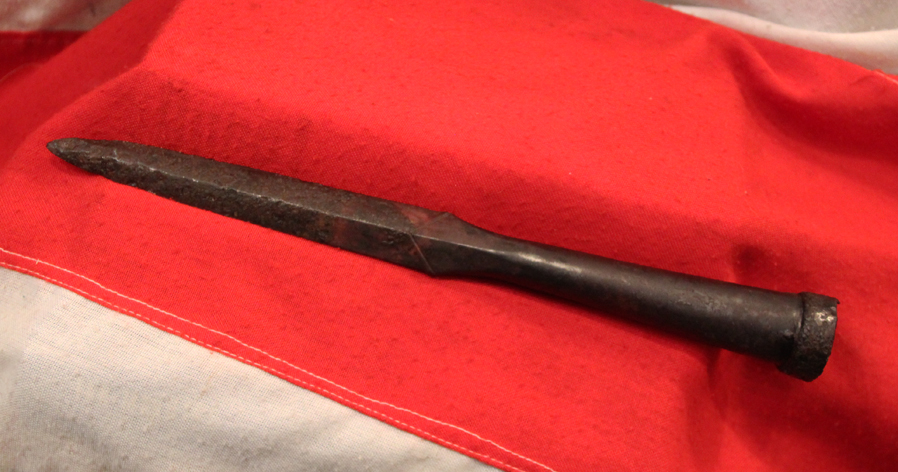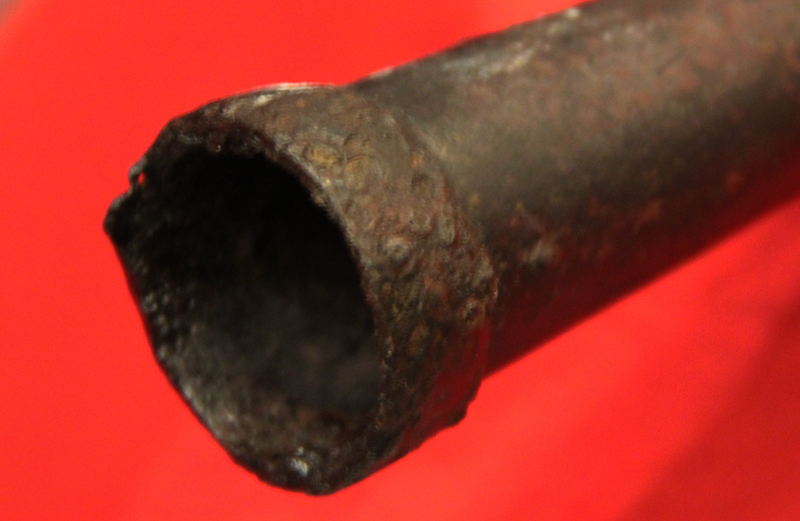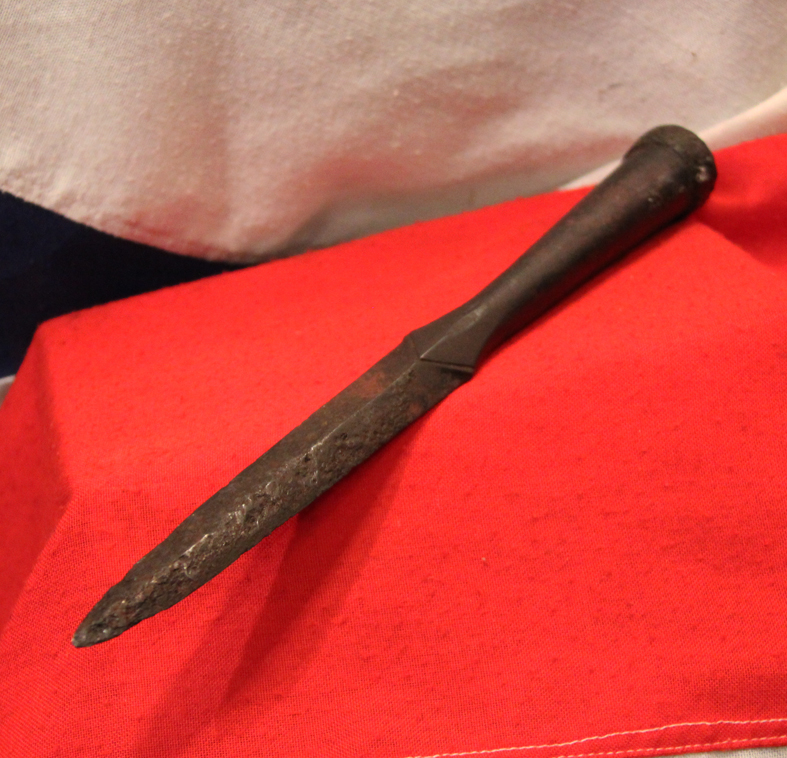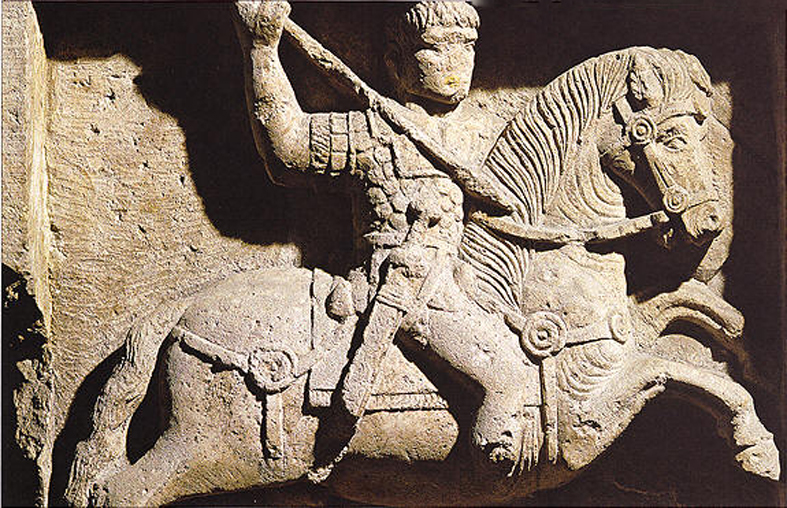A Most Powerful Rare Romano-Frankish Iron Socket Spear 1900 to 1500 Years Old. A Stunning Original Antiquity Of Great Heft & Presence, This Would Make A Fabulous Addition or Any Collection of Ancient Roman Empire Artifacts From The Era Of Emperor Commodus
To the invasions of Rome by the Huns and Visigoths.
Recovered many centuries ago from a Merovingian warrior's excavation of the 6th century. Roman to Frankish period 2nd to 6th century AD. Diamond form blade which would have incredible penetrative power, strong enough to pierce the strongest armour or breastplate of the time. Romano-Germanic cultural contact begins as early as the first Roman accounts of the Germanic peoples. Roman influence is perceptible beyond the boundaries of the empire, in the Northern European Roman Iron Age of the first centuries AD. The nature of this cultural contact changes with the decline of the Roman Empire and the beginning Migration period in the wake of the crisis of the third century: the "barbarian" peoples of Germania Magna formerly known as mercenaries and traders now came as invaders and eventually as a new ruling elite, even in Italy itself, beginning with Odoacer's rise to the rank of Dux Italiae in 476 AD.
The cultural syncretism was most pronounced in Francia. In West Francia, the nucleus of what was to become France, the Frankish language was eventually extinct, but not without leaving significant traces in the emerging Romance language. In East Francia on the other hand, the nucleus of what was to become the kingdom of Germany and ultimately German-speaking Europe, the syncretism was less pronounced since only its southernmost portion had ever been part of the Roman Empire, as Germania Superior: all territories on the right hand side of the Rhine remain Germanic-speaking. Those parts of the Germanic sphere extends along the left of the Rhine, including the Swiss plateau, the Alsace, the Rhineland and Flanders, are the parts where Romano-Germanic cultural contact remains most evident.
Early Germanic law reflects the coexistence of Roman and Germanic cultures during the Migration period in applying separate laws to Roman and Germanic individuals, notably the Lex Romana Visigothorum (506), the Lex Romana Curiensis and the Lex Romana Burgundionum. The separate cultures amalgamated after Christianization, and by the Carolingian period the distinction of Roman vs. Germanic subjects had been replaced by the feudal system of the Three Estates of the Realm. 11.85 inches long 250 grams Almost every iron weapon that has survived today from this era is now in a fully russetted condition, as is this one, because only the swords of kings, that have been preserved in national or Royal collections are today still in a good state and condition.
Code: 21964
1995.00 GBP

